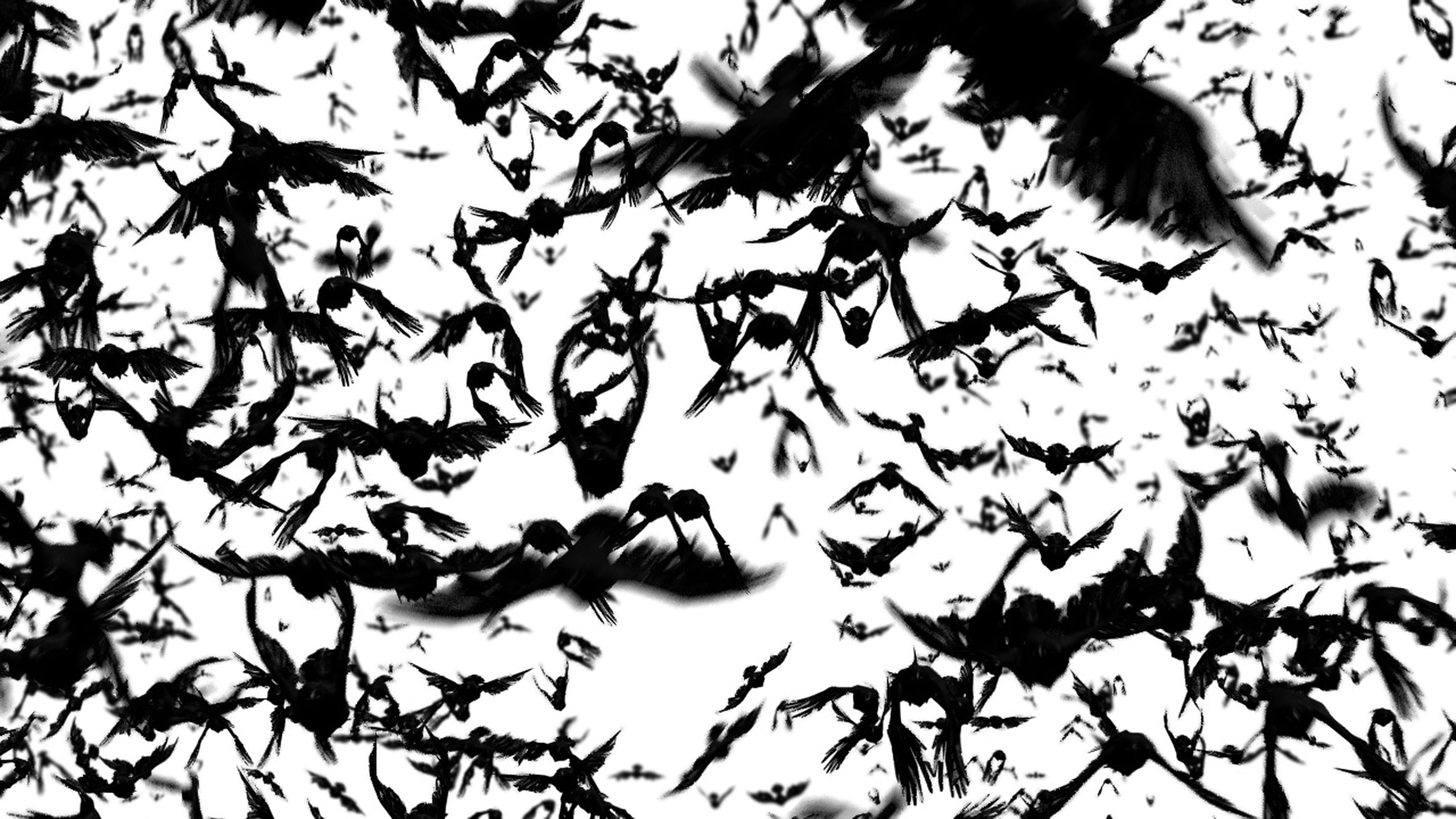Swarm
2010
3D animation: duration 00:31
Commission: Onassis Cultural Centre for the theme “Democracy and Politeia” of its conference The Athens Dialogues (24-27/11/ 2010)
Visual Dialogues
2010-2011
Syntagma Square Metro Station
The Garden of Eden
2012
Palais de Tokyo, Paris
Curator: Tjorg Douglas Beer
Neue Klarheit
2012
vkunst Frankfurt
To the Limits of Togetherness
2012
The Symptom Project, Amfissa, Greece
Curator: Kostis Stafylakis
Animacall
2011
Contemporary Art Center of Thessaloniki, Warehouse B1, Greece
Art Athina
2011
Swarm is a 3D audiovisual installation depicting the passing of an aggressive and noisy flock of birds.
Drawing from numerous references to the concept of a swarm in poetry, critical theory, literature and cinema, the flock of black birds in Swarm pertains to the, perhaps, not so hypothetical scenario of an unknown, unseen and unexpected threat.
Read MoreAlthough the most descriptive example of swarming might be Hitchcock’s The Birds, (1963) Arthur Rimbaud imagines the revolutionary Communards (1871) as swarming ants, while Antonio Negri talks about a collective intelligence, “a swarm intelligence” of the members of a multitude. These references converge in my research of a distributed network of attack, “swarming,” which is based on the studies of the collective behavior of social animals.
“Swarming” depends on devolution of power to small autonomous, or semi-autonomous units and their capacity to interconnect. These units of action strike an enemy from several different directions, and, due to their size, disperse into the environment, only to regroup again.
Examples of “swarming” can be found throughout history, but due to advanced information technology, “swarming” can now establish a new pattern in conflict.
The projection begins with a quiet, slow and rather hypnotic flapping of individual birds, which, very soon, transform into a loud and threatening swarm, only to habitually move or be dissolved as abruptly as it was formed.
Swarm effectively reenacts the swarming attack of a distributed network with its 40 seconds length and its looped projection.
The animation format is HD 1280X720 and it was created with 3D StudioMAX software


